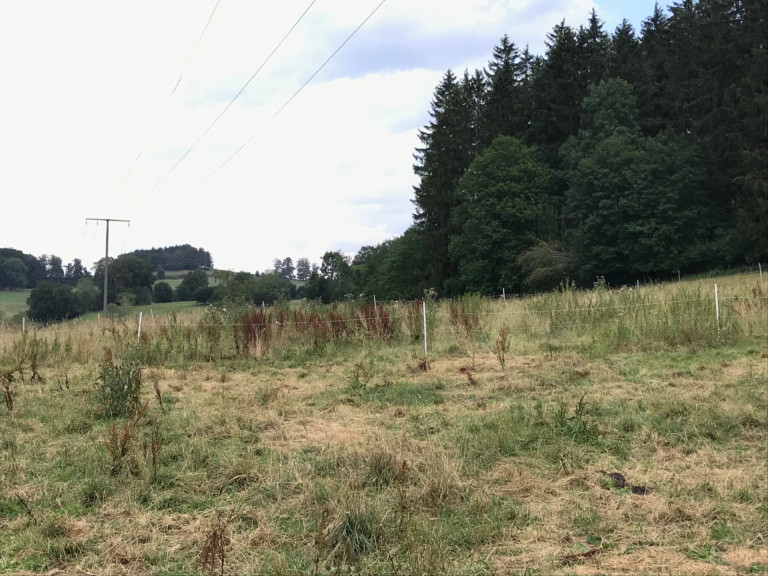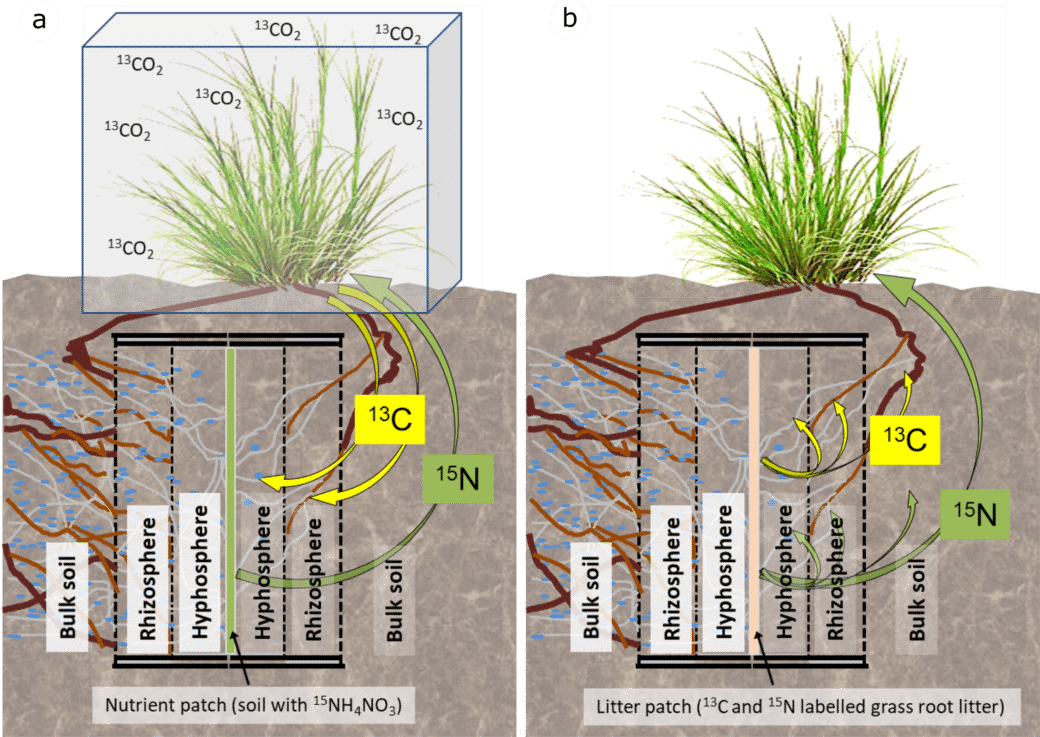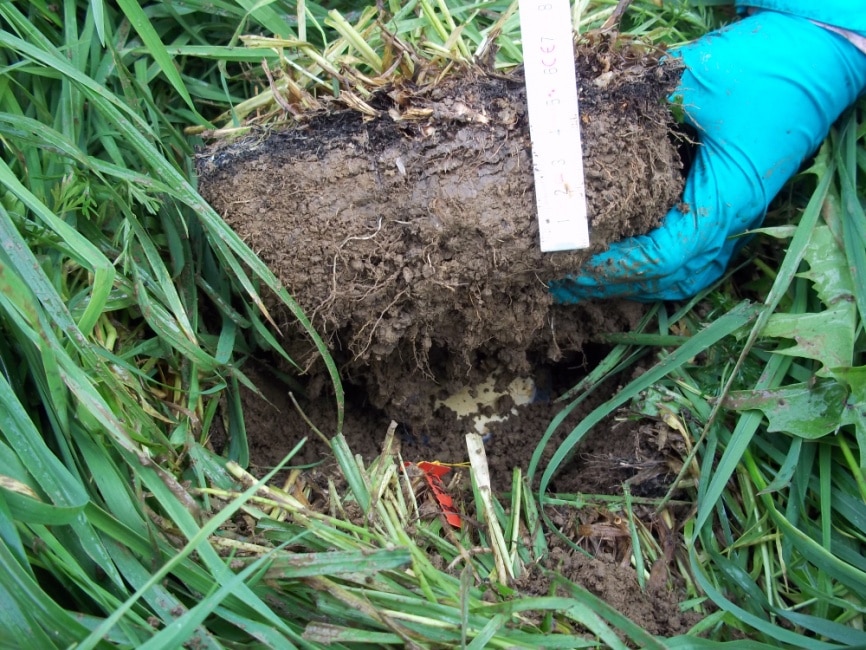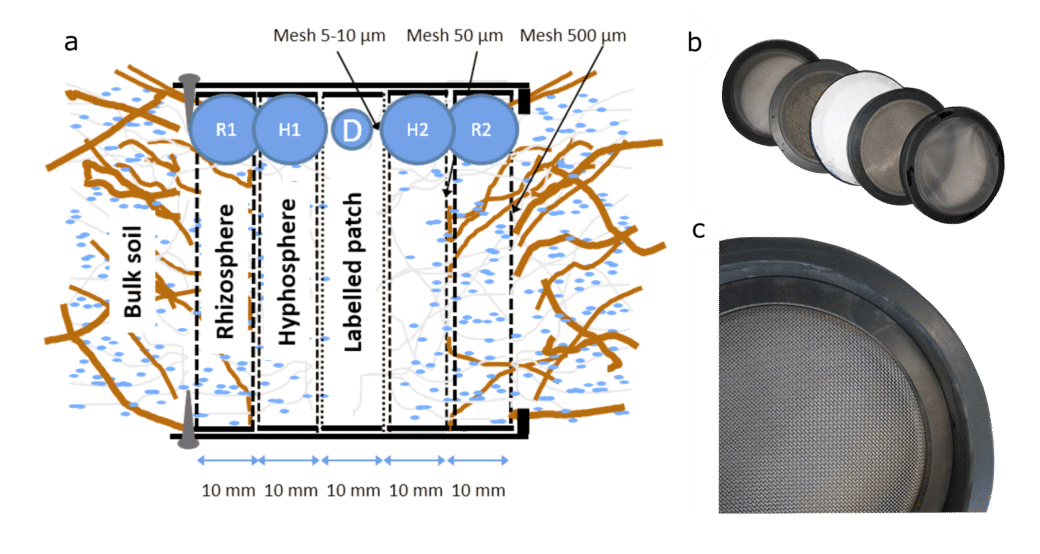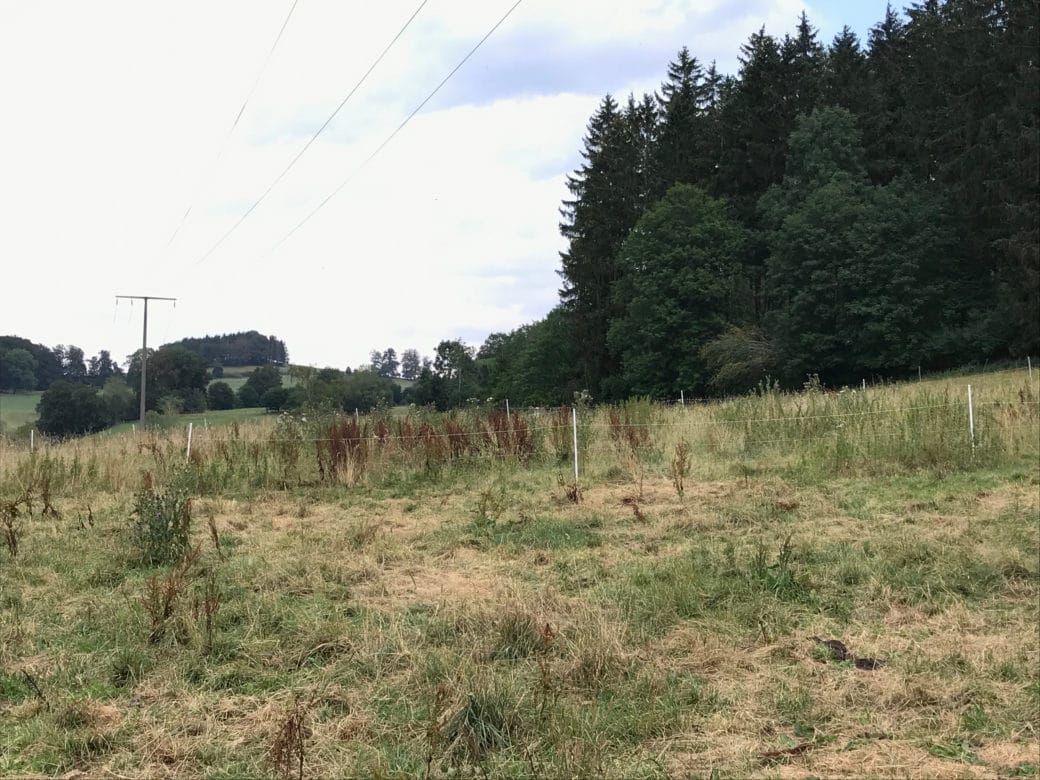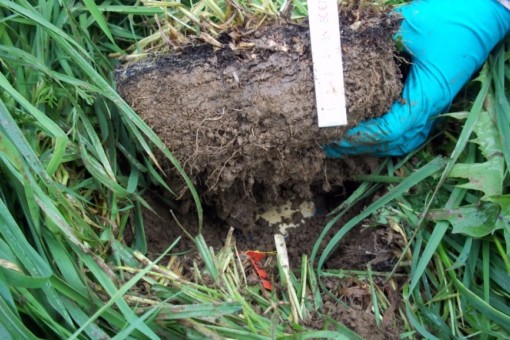The function of the hyphosphere in carbon and nutrient partitioning between plants and microorganisms in grassland soils under different land-use intensities
Reduction in land-use intensity may favour plant-symbiont interactions, modifying nutrient acquisition strategies of plants and microbes at different scales. At the rhizosphere scale, for example, a narrow region of soil directly influenced by root secretions and associated soil microorganisms, the root-soil interface is characterised by gradients of nutrients, protons, carbon resources, and living microorganisms. The hyphosphere is defined as a sphere where symbiotic and non-symbiotic fungi are present in the soil environment; it is characterised by intense fungal-bacterial-soil. These distinct zones are often difficult to separate experimentally from each other.
The aim of our study is to unveil how fungal-bacterial interactions in the hyphosphere contribute to plant nutrition, as well as how the carbon supply from plants affect bacteria via the symbiotic interactions with fungi.
In the next three years, we will test the following hypotheses:
- Both symbiotic fungi (mycorrhizal fungi) and free-living saprotrophic fungi dominate initial microbial carbon uptake from the plant by rapid processing and channelling of rhizodeposits into the hyphosphere, wherefore this can function as a ‘carbon bridge’ between plants and bacteria; bacteria profit as secondary consumers.
- Plants rely on nutrient transport via the hyphosphere to a greater extent in low as compared to high land-use intensity (LUI) grassland soils.
- Experimental de-intensification of grassland land use will modify abundance and function of soil microorganisms either by reducing nutrient supply (reduced fertilisation, direct response of soil microorganisms) or by reducing mowing intensity (changing plant input into soils, indirect response of soil microorganisms).
In order to test our hypotheses, we will need a complete separation between the rhizosphere and the hyphosphere. We will use newly developed HYPHOboxes that experimentally separate the hyphosphere from the rhizosphere and the surrounding bulk soil (Fig. 1).
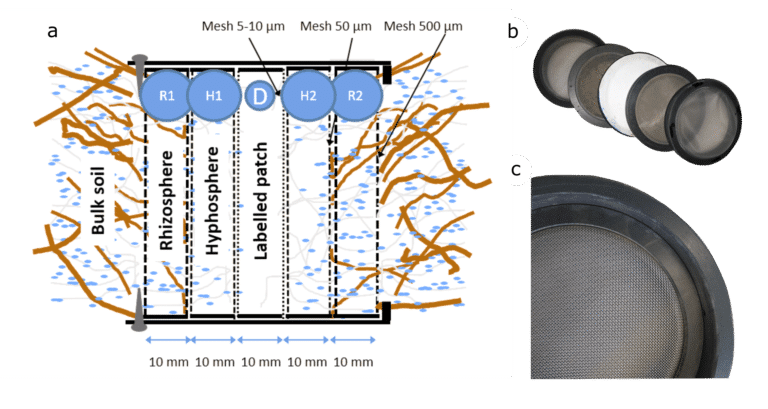
Experiments 1 and 2: Carbon flow from plants to the hyphosphere and nutrient flow from the hyphosphere to the plants and back
The goals of these experiments are to understand (i) which fungi benefit most from plant-derived carbon in grassland ecosystems and which fungi are responsible for the ‘long-distance’ transport (>15 mm) of carbon, thereby providing resources for bacteria as secondary consumers (Fig. 2a), and (ii) which fungi are responsible for the transport 13C and 15N from the detritusphere through the hyphosphere to the rhizosphere (Fig. 2b). We will use a 13CO2 pulse labelling approach to quantify the carbon flux of plant-fixed C into fungi and their associated bacteria, and a 13C and 15N labelling in the detritusphere compartment will allow us to measure long-term 13C and 15N incorporation in the microbial biomass as well as its transfer to the plant biomass.
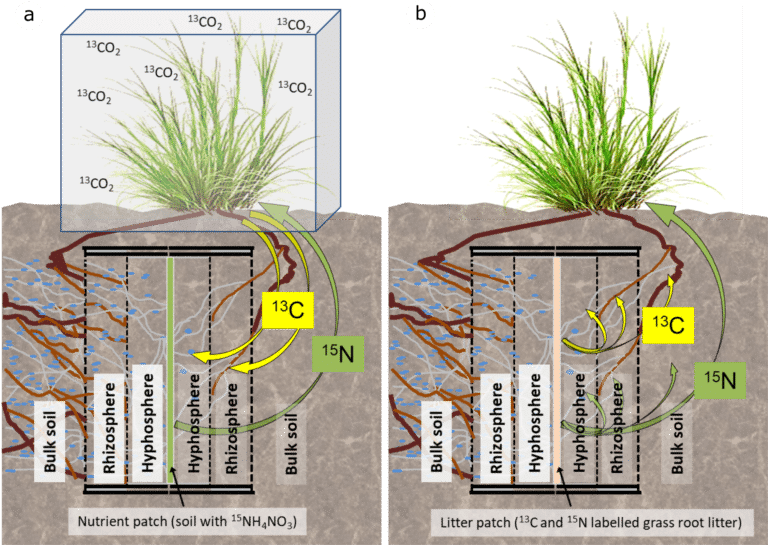
Experiment 3: De-intensification of grassland sites – Direct versus indirect effects on soil microorganisms (multi-grassland land-use experiments)
De-intensification of land use may drive changes in microbial communities and in the soil functions they regulate. The newly established multi-grassland land-use experiments (Fig. 3) will make it possible to identify the direct and indirect mechanisms that may contribute to changes in microbial abundance and function.
